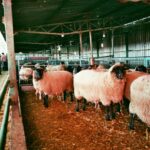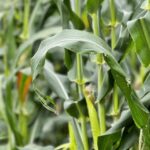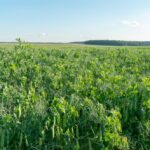Soil erosion is a major challenge for farmers worldwide, as it leads to the loss of fertile topsoil, reduces crop productivity, and contributes to environmental degradation. Fortunately, using the right farming tools and techniques can help manage soil erosion effectively. Here’s how farmers can use specific tools and practices to protect their soil and improve farm sustainability.
1. Assessing Soil Erosion Risks
Before implementing tools and strategies, it is essential to assess the erosion risks on your land. Consider factors such as:
- The slope of the land.
- Soil type and structure.
- Climate and rainfall patterns.
- Current farming practices.
Once these risks are identified, you can select appropriate tools and methods to address the problem.
2. Contour Farming with Plows
Contour farming involves plowing along the natural contours of the land rather than straight lines. Using contour plows or disc plows is highly effective in this approach. These tools create ridges and furrows that slow down water flow, allowing it to seep into the soil rather than washing it away.
Contour farming is particularly useful on sloped land where water runoff is a major concern.
3. Terracing Tools
Terracing is a proven method for controlling soil erosion on steep slopes. Specialized tools like terrace-building plows or graders can help construct terraces effectively. Terraces reduce the speed of water runoff by dividing the slope into smaller, leveled sections, which prevents soil loss and retains water for crops.
4. Cover Crop Planting Equipment
Planting cover crops is one of the most effective ways to manage soil erosion. Cover crops, such as legumes, grasses, or clover, help protect the soil surface from wind and water erosion. Seed drills and no-till planters are ideal tools for sowing cover crops efficiently.
By using these tools, farmers can ensure uniform planting, reducing bare soil exposure and enhancing root systems that hold soil in place.
5. Mulching Machines
Applying mulch is another excellent strategy to prevent soil erosion. Mulching machines or spreaders can distribute organic or synthetic mulch evenly across fields. Mulch acts as a protective layer, reducing the impact of raindrops on soil, retaining moisture, and suppressing weed growth.
6. No-Till and Minimum-Till Equipment
No-till and minimum-till farming practices help manage soil erosion by minimizing soil disturbance. Specialized equipment like no-till seed drills and strip-till machines allows farmers to plant crops without turning the soil excessively.
This approach preserves soil structure, maintains organic matter, and reduces erosion risks, especially on fragile or sandy soils.
7. Windbreak Planting Tools
In areas prone to wind erosion, planting windbreaks, such as rows of trees or shrubs, is highly effective. Tools like augers, posthole diggers, and tree planters simplify the process of establishing windbreaks.
Windbreaks reduce the speed of wind across fields, protecting the soil and crops from damage.
8. Drainage Management Tools
Proper water drainage is crucial to prevent waterlogging and erosion. Tools like subsoilers and ditchers can help create drainage channels or improve soil infiltration. These tools allow excess water to flow away from vulnerable areas, reducing the risk of soil being washed away.
9. Erosion Control Structures
Farmers can also use tools to build erosion control structures like check dams, gabions, and grassed waterways. Equipment such as excavators and graders can help construct these features effectively.
These structures slow down water flow, trap sediment, and protect soil from being carried away by runoff.
10. Regular Maintenance of Tools and Structures
To ensure long-term success, it’s essential to maintain farming tools and erosion control structures regularly. Clean and repair equipment after use, and inspect terraces, drainage channels, and windbreaks to ensure they remain functional and effective.
Managing soil erosion requires a combination of the right tools and sustainable farming practices. By using tools like contour plows, mulching machines, and no-till planters, farmers can protect their soil, reduce erosion, and enhance farm productivity. Combining these tools with strategies like planting cover crops, creating terraces, and maintaining drainage systems ensures a comprehensive approach to soil conservation. Embracing these techniques not only preserves the environment but also secures the long-term viability of agricultural land.
Join 'Farmers Mag' WhatsApp Channel
Get the latest Farming news and tips delivered straight to your WhatsApp
CLICK HERE TO JOIN






